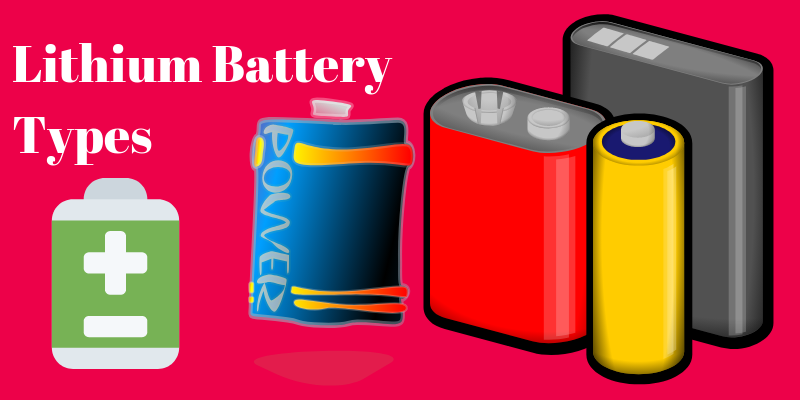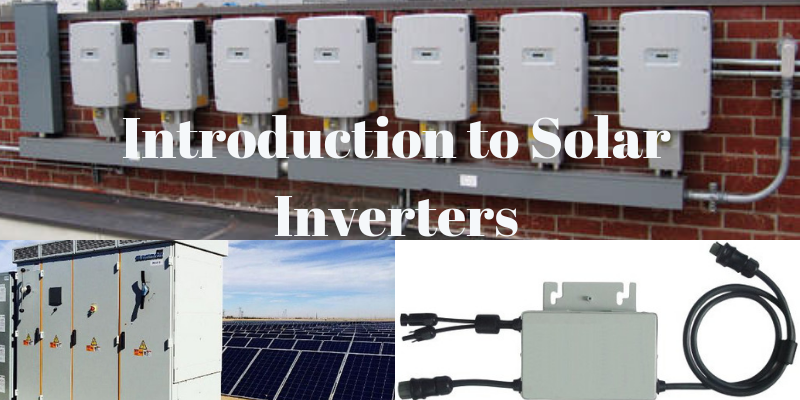Types of Lithium Batteries
Though Lithium batteries are in use for a long period, they have been heard often in the energy storage industry now. There are various research and development activities going on in the field of the Lithium Batteries. During the charging of the battery, the ion moves from anode to cathode and during the discharge the reverse happens. These batteries when charged or discharged beyond their C rating, making them vulnerable to fast charging as it may result in overheating and undue stress. A few of the lithium batteries are available in the commercial market, while there is lot advanced researches going to improve further.
A few of the commercially available lithium batteries are listed below.
Lithium Cobalt Oxide (LiCoO2)
Here, the cathode, which has a layered structure is made of cobalt oxide and anode made of graphite carbon. The typical charging rate is between 0.7 – 1 C for a period of three hours for a charge up to 4.2V. The discharge rate is 1 C up to 2.5V. 3.6V is the nominal voltage range, while the operating voltage range is 3.0 to 4.2V/Cell. The specific energy, popularly called energy density is anywhere between 150 – 200Wh/Kg. Based on the load, temperature and depth of discharge, the life cycle is 500 – 1000. The thermal runaway is 150°C, promoted at full charge.
Merits and Demerits: The life span is relatively short with low thermal stability and limited specific power. The main advantage is the high specific energy.
Applications: It widely used in electronic devices such as mobile phones, tablets, laptops, cameras, etc.
Lithium Manganese Oxide (LiMn2O4)
The name derived from it cathode which is made of lithium manganese oxide (LiMn2O4). The anode is graphite. While 3.80 is the nominal voltage, the voltage is range is between 3.0 to 4.2V/Cell. 100 – 150Wh /Kg is the range of the specific energy. The charge rate is typically 0.7 – 1C, with a maximum of 3C up to 4.2V, while the discharge rate is 1C up to 2.5V, while 10C is also possible in some cases. The life cycle is 300 – 700 cycles depending on the load, temperature and depth of discharge. The thermal runaway is 250°C.
Merits and Demerits: It is safer than Li – Cobalt and usually with NMC for an enhanced performance. While, high power can be derived, the capacity is usually less.
Applications: It is commonly used in equipment in medical field, engineering power tools and even electric trains.
Lithium Nickel Manganese Cobalt Oxide (LiNiMnCoO2 or NMC)
The cathode in these batteries are a combination of Nickel, cobalt and manganese in the ratio of 1:1:1. While 5:3:2 is another successful combination. Due to the high cost of cobalt, in some mixtures, the ratio of cobalt is reduced. The anode is graphite.
The nominal voltage is 3.6 or 3.7V, while the operating voltage range is 3.0 – 4.2V/Cell or even higher in some cases. 150 – 220 Wh/Kg is specific energy, which is relatively higher. 0.7 – 1 C is the charge range rate up to 4.2V, while some goes as high as 4.3V. The typical charging time is 3 hours. Caution must be exerted as charging above 1C shortens the battery life. The discharge rate is 1C with a cut off of 2.5V. 2C discharge is also possible in some cases. Based on the load, temperature and depth of discharge, the life cycle is 1000 – 2000, which is relatively higher. The thermal runaway is 210°C.
Merits and Demerits: The capacity and power are relatively higher.
Applications: Electric Vehicles and medical equipment.
Lithium Iron Phosphate (LiFePO4)
Lithium Iron Phosphate is fast becoming popular is becoming widely used to replace the traditional VRLA batteries. The cathode is Lithium Ferro Phosphate, while the anode is graphite.
The nominal voltage is 3.2 or 3.3V, while the operating voltage is 2.5 – 3.65V/Cell. The specific energy is 90 – 12Wh/Kg. The charging rate is 1C up to 3.65V. The typical charging time is 3 hours. The discharge rate is 1C and can go up to 25C in some cells with a cut off voltage of 2.5V. The life cycle is 1000 – 2000 based on the load, temperature and depth of discharge. The thermal runaway is 270°C which is relatively higher and making it very safe even when fully charged.
Merits and Demerits: Safe, very flat discharge curve. The capacity is low.
Applications: Replaces VRLA batteries. Used in Solar Energy Storage, portable and stationary devices.
Lithium Nickel Cobalt Aluminum Oxide (LiNiCoAlO2)
The cathode here is a combination of Nickel, Cobalt and Aluminium. The anode is graphite. Due to its high specific energy, longer life and good specific power, it is quite like NMC.
The nominal voltage range is 3.6V, while the typical operating range is 3.0 – 4.2V/Cell. The specific energy is in the range of 200 – 260Wh/Kg. While 300Wh/Kg is predictable. The charging rate is 0.7C up to 4.2V with a typical charging duration of three hours. Fast charging is also possible with some cells. The discharge rate is typically 1C with a cut off of 3V. It should be noted that high discharge rate will reduce the battery life. The thermal runaway is 150°C.
Merits and Demerits: It serves as energy cell. The cost is high and the safety is marginal.
Applications: It is used in medical equipment, industrial tools, electric powertrain, etc.
Lithium Titanate (Li4Ti5O12)
The cathode here is lithium manganese oxide, while the anode is not graphite as it is usual in the lithium batteries. Here the anode is made up of nano crystals of lithium titanate.
The voltage range is 2.4V, while the nominal voltage is 1.8 – 2.85V/Cell. The specific energy is 50 – 80Wh/Kg. 1C is the typical charging rate, while it can go up to 5C with a maximum voltage level of 2.85V. The typical discharge rate is 10C which can go up to 30C with a cut off voltage of 2.85V. The life cycle is very long with 3000 – 7000 life cycle.
Merits and Demerits: Very safe with long life. Very low specific energy.
Applications: Electric Vehicles, Solar Lights, UPS, electric power trains, etc.




